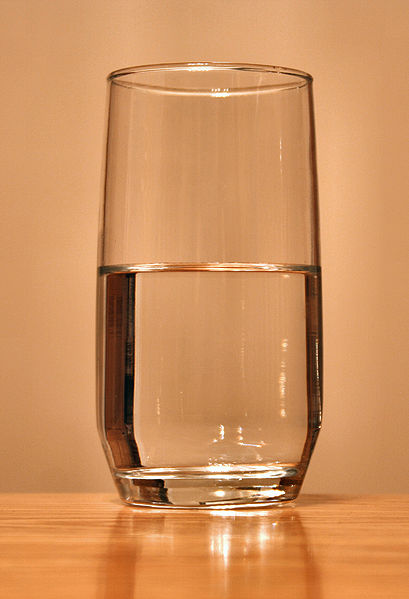This article discusses treatment options for kidney stones, from lifestyle changes such as drinking plenty of water, to surgical intervention.
Contents
How are kidney stones treated?
The kidneys are two bean-shaped organs that are roughly four inches in length found at the back of the abdomen, on either side of the spine. The function of the kidneys is to remove waste products from the blood and these are then passed out of the body in urine. However, the waste products in the blood can occasionally form crystals inside the kidneys and over time these can build up to form a hard stone-like deposit.
Fortunately, surgery to remove kidney stones is not usually necessary. Most can pass through the urinary system by drinking plenty of water — two to three litres a day — to help move the stone along. It is often possible to remain at home during this process, drinking fluids and taking pain medication as needed. Your doctor will usually ask you to save the passed stone(s) for testing.
Lifestyle changes

A simple and most important lifestyle change to prevent kidney stones from developing is to drink more liquids — water is best. Someone who tends to form kidney stones should try to drink enough liquids throughout the day to produce at least two litres of urine in every 24-hour period.
There are a number of different types of kidney stone - calcium stones, which are the most common and often have no specific cause, uric acid stones, often caused by a protein-rich diet, cysteine stones, which are rare and arise due to an inherited defect in amino acid transport within the kidney and struvite or infection stones, which are usually associated with urinary tract infections. Struvite stones can become very large in size and if left untreated can cause chronic infection and damage to the kidney.
In the past, people who had a tendency to form calcium stones were told to avoid dairy products and other foods with high calcium content. However, recent studies have shown that foods high in calcium, including dairy products, may actually help to prevent calcium stones. Taking calcium as a supplement in pill form, however, may increase the risk of developing stones.
Patients may be told to avoid food with added vitamin D and certain types of antacids that have a calcium base. Someone who has highly acidic urine may need to eat less meat, fish, and poultry as these foods increase the amount of acid in the urine.
To prevent cystine stones, a person should drink enough water each day to dilute the concentration of cystine that escapes into the urine, which may be difficult. More than four litres of water may be needed every 24 hours, and a third of that must be drunk during the night.
Medical therapy
During the acute renal colic phase, painkillers including non-steroidal anti-inflammatory drugs (NSAID) such as diclofenac, or opiates are recommended.
A doctor may prescribe certain medications to help prevent calcium and uric acid stones. These medicines control the amount of acid or alkali in the urine which are key factors in crystal formation. The medicine allopurinol may also be useful in some cases of hyperuricosuria.
Doctors usually try to control hypercalciuria, and thus prevent calcium stones, by prescribing certain diuretics, such as hydrochlorothiazide. These medicines decrease the amount of calcium released by the kidneys into the urine by favouring calcium retention in bone. They work best when sodium intake is low.
Rarely, patients with hypercalciuria are given the medicine sodium cellulose phosphate, which binds calcium in the intestines and prevents it from leaking into the urine.
People with hyperparathyroidism sometimes develop calcium stones. In these cases, surgery is usually required to remove the parathyroid glands, which are located in the neck. In most cases, only one of the glands is enlarged. Removing the glands cures the patient’s problem with hyperparathyroidism and kidney stones.
If cystine stones cannot be controlled by drinking more fluids, a doctor may prescribe medicines such as tiopronin and penicillamine, which help to reduce the amount of cystine in the urine.
For struvite stones that have been totally removed, the first line of prevention is to keep the urine free of bacteria that can cause infection. A patient’s urine will be tested regularly to ensure no bacteria are present.
If struvite stones cannot be removed, a doctor may prescribe a medicine called acetohydroxamic acid (AHA). AHA is used with long-term antibiotic medicines to prevent the infection that leads to stone growth.
Medical expulsive therapy

A meta-analysis of nine randomised controlled trials suggests that treatment with a calcium channel blocker or an alpha blocker improves the chance of the spontaneous expulsion of small distal urinary stones, which would spare patients from surgery.
Surgical treatment for kidney stones
Surgery may be needed to remove a kidney stone if it:
- Does not pass after a reasonable period of time and causes constant pain.
- Is too large to pass on its own or is caught in a difficult place.
- Blocks the flow of urine.
- Causes an ongoing urinary tract infection.
- Damages kidney tissue or causes constant bleeding.
- Has grown larger, as seen on follow-up imaging.
Until twenty years ago, open surgery was necessary to remove a stone. The surgery required a recovery time of four to six weeks. Today, treatment for these stones is greatly improved, and many options do not require major open surgery and can be performed using minimally invasive techniques requiring only a few hours hospital stay.
Extracorporeal Shock Wave Lithotripsy
Extracorporeal Shock Wave Lithotripsy (ESWL) is the most frequently used procedure for the treatment of small kidney stones. In ESWL, shockwaves that are created outside the body travel through the skin and body tissues and target the denser stones. The stones break down into small particles and are easily passed through the urinary tract in the urine.
Several types of ESWL devices exist. Most devices use either x-rays or ultrasound to help the urologist pinpoint the stone during treatment. For most types of ESWL procedures, anaesthesia is not required.
In many cases, ESWL may be done on an outpatient basis. Recovery time is relatively short, and most people can resume normal activities the next day.
Complications may occur with ESWL. Some patients have blood in their urine for a few days after treatment. Bruising and minor discomfort in the back or abdomen from the shockwaves can occur. To reduce the risk of complications, we would usually tell patients to avoid taking aspirin and other medicines that affect blood clotting for two weeks before treatment.
Sometimes, the shattered stone particles can cause a minor blockage as they pass through the urinary tract and cause discomfort. In some cases, the doctor will insert a small tube called a stent through the bladder into the ureter under general anaesthetic to help these fragments pass. Sometimes the stone is not completely shattered with one treatment, and additional treatments may be needed.
As with any interventional, surgical procedure, potential risks and complications will be discussed with the urologist before making a treatment decision.
Percutaneous nephrolithotomy
Sometimes a procedure called percutaneous nephrolithotomy (PCNL) is recommended to remove a kidney stone. This treatment is often used when the stone is quite large or in a location that does not allow effective use of ESWL or flexible ureterorenoscopy (an endoscopic examination of the ureter).
In this procedure, the urologist makes a one inch incision in the back and creates a tunnel directly into the kidney. Using an instrument called a nephroscope, the urologist locates and removes the stone. For large stones, the Swiss LithoClast® Master, which produces simultaneous ultrasonic and pneumatic lithotripsy, may be needed to break the stone into small pieces. Often, patients stay in the hospital for several days and may have a small tube called a nephrostomy tube left in the kidney during the hospital stay.
A major advantage of percutaneous nephrolithotomy is that the urologist can remove all of the stone fragments directly instead of relying solely on their natural passage from the kidney.
Ureteroscopic Stone Removal
Although some stones in the ureters can be treated with ESWL, ureteroscopy may be needed for mid- and lower-ureter stones and a flexible ureterorenoscopy for small kidney stones not amenable to ESWL. No incision is made in this procedure. Instead, the urologist passes the ureteroscope, a small fiberoptic instrument, through the urethra and bladder into the ureter. The urologist then locates the stone and either removes it with a basket-like device or shatters it with Holmium laser, a special instrument that vaporises the stone into sand particles with minimal trauma to the wall of the ureter or kidney.
Complications of stone treatment
Blood in urine is a very common feature as a result of treatment. It is often transient and settles rapidly.
Urine infection may occur, as stones are often full of bacteria. The urologist tends to give a large dose of antibiotics in theatre and often send patients home on antibiotics.
Discomfort or pain - Stents can cause discomfort or pain, commonly in the bladder and kidney area, but sometimes in other areas such as the groin, urethra and genitals. The discomfort or pain may be more noticeable after physical activities and after passing urine.


